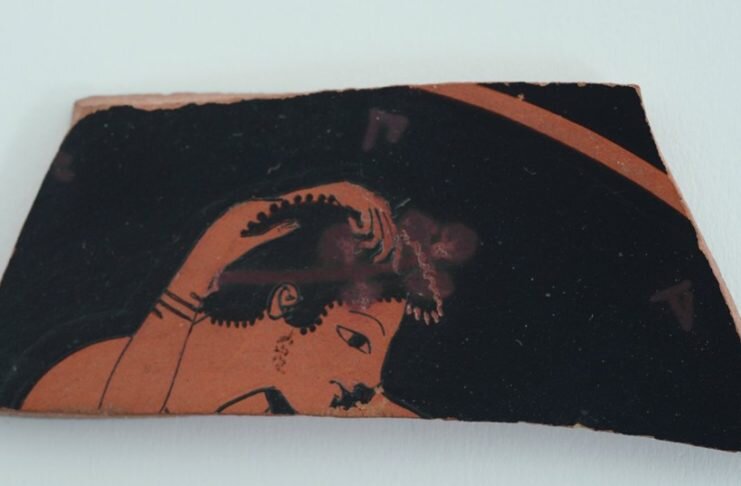It dates from the end of the 6th century BC and its history fascinates. It depicts a crowned young man giving his first kiss with his eyes open. She has embraced him tenderly with both her hands and has placed her fingers in his hair.
However, her figure is no longer visible, as the shell broke, leaving only her lips on the fragment. The rest of her body is lost. The "kiss" of the National Archaeological Museum is a small part of the painted circular field that adorned the bottom of a chalice made in the last fifteen years of the 6th century. The shell was found between the years 1885-1890 during the excavation of the embankments of the Acropolis Rock by the Superintendent General of Antiquities Panagis Kavvadias and Georg Kawerau. And as is often the case with the finds of such early excavations, the exact place and time of the find are not given.
In contrast to this ambiguity, however, the careful study of the fragment style by Botho Graef and Sir John Davidson Beazley in the early 20th century provided information about the kiss painter. According to experts in Attic angiography, the vase was painted by the Carpenter Painter, as the creator of a series of unsigned red-figure vases dating from 515 to 500 B.C. was conventionally called and was from Athens. Although he owes his name to the eponymous chalice in British Museum, attributed to him, which shows a carpenter at work, some of his extant vessels bear kissing depictions.
The Carpenter Painter, an artist who never signed his name, lived in the days of the fall of the last Athenian Tyranny and the birth of the Republic.
The young man on the rare fragment of the red-figure cup prepares to kiss a woman. Her face is not saved. However, her hands can be seen gracefully caressing his hair.











